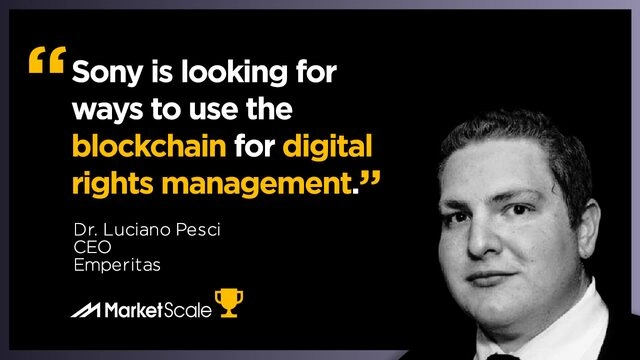On this week’s episode of the MarketScale Sports & Entertainment podcast, we take a look at the longterm viability of the sport of football and some of the people who are most affected by it with author Rob Ruck. Our second feature of the show takes a look at how blockchain can make a difference in the world of entertainment, cutting out middlemen and ensuring money makes it into the right hands. We wrap up the show by examining the Super Bowl from multiple different angles, discussing the logistics, security, and economic impact of the big game.
Noted Sports Author Rob Ruck: Samoan Athletes May Be Most Vulnerable to Injury
 Football is at a crossroads, its future imperiled by the very physicality that drives its popularity. The game’s grass roots—high school and youth programs—are withering. But players from the small, South Pacific, American territory of Samoa and their brothers in Hawaii and the mainland are bucking that trend, quietly becoming the most disproportionately overrepresented culture in the sport.
Football is at a crossroads, its future imperiled by the very physicality that drives its popularity. The game’s grass roots—high school and youth programs—are withering. But players from the small, South Pacific, American territory of Samoa and their brothers in Hawaii and the mainland are bucking that trend, quietly becoming the most disproportionately overrepresented culture in the sport.
In his latest book Tropic of Football: The Long and Perilous Journey of Samoans to the NFL, noted sports author Rob Ruck explores the history of contact sports in the Samoan culture and population, and why they may be most vulnerable. Ruck is a professor in the Department of History at the University of Pittsburgh. In his previous books, Tropic of Baseball, Sandlot Seasons, and Raceball: How the Major Leagues Colonized the Black and Latin Game, Ruck explores the issues of race, socioeconomics and sports.
“It’s pretty apparent that football is on the wane among youth in this country,” Ruck says in this episode of the Marketscale Sports and Entertainment podcast. “And yet while football is at this existential crossroads, more and more Polynesian kids and kids from lower socioeconomic classes or taking to the sport. Better-off parents don’t want their kids to play football, but kids from communities where there are fewer options are still encouraging it. And I think with Polynesians, it’s reached such a critical mass in the last decade that we’re likely to see more and more Polynesian kids playing Division I football and in the NFL.”
While most of the focus of Super Bowl LIII is on the game itself and the fan experience, it is also important to think about what goes on behind the scenes. In a world of hyper-security and threats from every angle, what does it really take to secure the big game?
The need to secure the world’s most watched event has become a necessity. But most of the security features and manpower will not make the news. However, there is nothing that can be left to chance because of the extremists that might wish to do harm on the world stage. There is a balance that has to be kept in line with allowing fans to have a great experience without fear, while also making their presence known so that there is a very clear statement that this event will be safe and secure.
Blockchain is Making Inroads in Entertainment

The process for receiving royalties in the entertainment industry has been confusing and convoluted for a very long time. Dr. Luciano Pesci, CEO of Emperitas, is suggesting a fix: blockchain.
The wait to receive royalties in the music industry can take months, if not years, because of the number of times money has to change hands. By reducing the number of middlemen involved in the process, Pesci is hoping the process can be quickened and more money makes it to the people who have earned it.
When it comes to the movies, Pesci says the largest problem is copyright management. In a day and age where illegal streaming is so easily accessible, ensuring creatives get paid for their work is of utmost importance. It’s estimated that $20 billion is lost every year due to piracy and illegal streaming.
For the latest news, videos, and podcasts in the Sports & Entertainment Industry, be sure to subscribe to our industry publication.
Follow us on social media for the latest updates in B2B!
Twitter – @SportsEntMKSL
Facebook – facebook.com/marketscale
LinkedIn – linkedin.com/company/marketscale
 Football is at a crossroads, its future imperiled by the very physicality that drives its popularity. The game’s grass roots—high school and youth programs—are withering. But players from the small, South Pacific, American territory of Samoa and their brothers in Hawaii and the mainland are bucking that trend, quietly becoming the most disproportionately overrepresented culture in the sport.
Football is at a crossroads, its future imperiled by the very physicality that drives its popularity. The game’s grass roots—high school and youth programs—are withering. But players from the small, South Pacific, American territory of Samoa and their brothers in Hawaii and the mainland are bucking that trend, quietly becoming the most disproportionately overrepresented culture in the sport.







